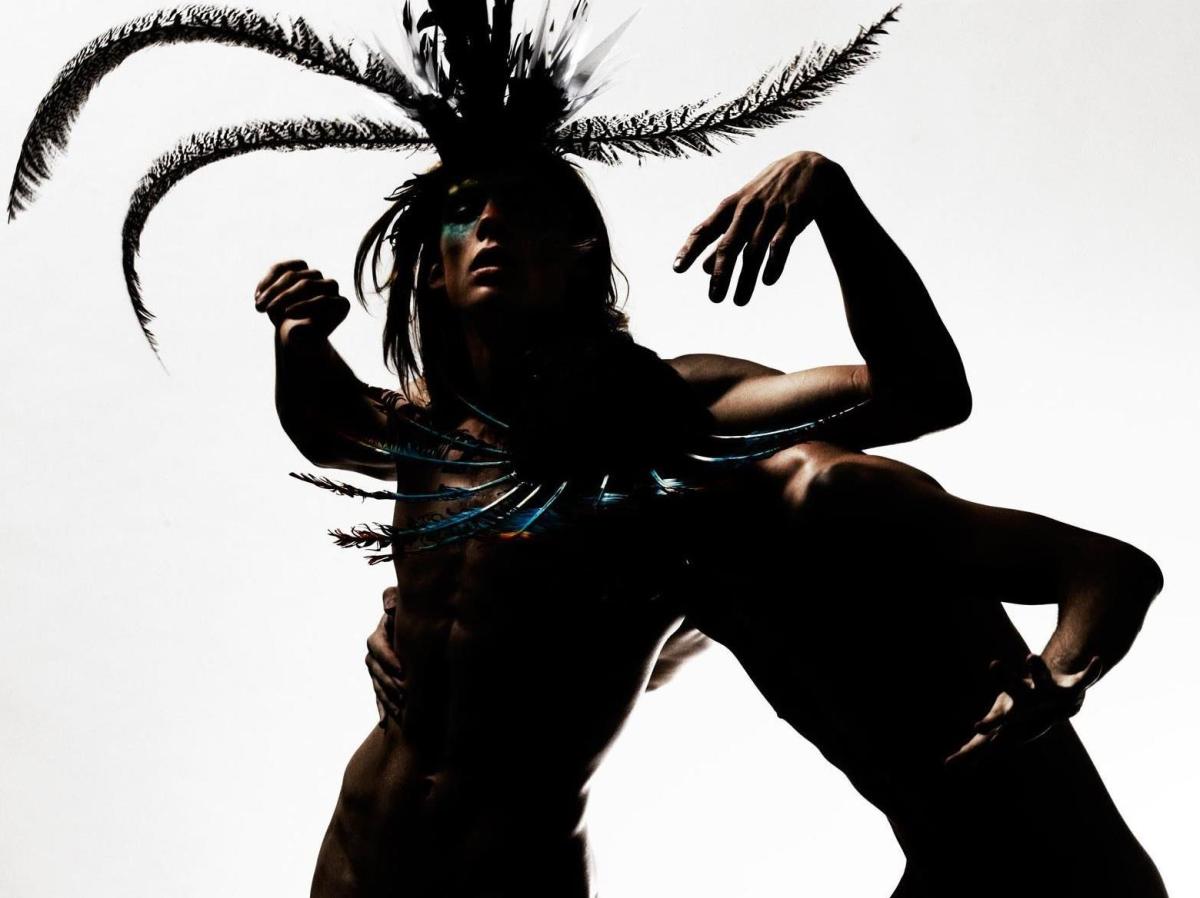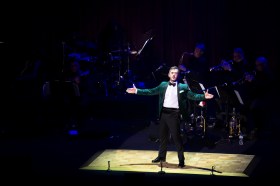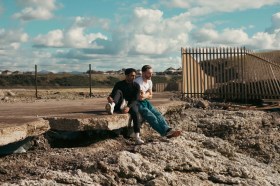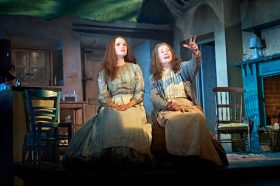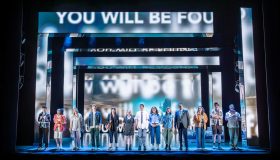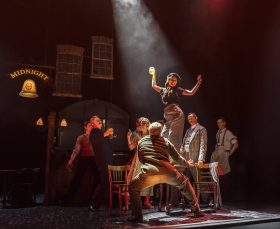Phillip Adams BalletLab’s Aviary (2011). Photo by Jeff Busby.
‘Good choreography fuses eye, ear and mind,’ according to American critic Arlene Croce, while George Balanchine, the co-founder of the New York City Ballet, once famously said of his art form: ‘Choreography is simpler than you think. Just go and do, and don’t think so much about it. Just make something interesting.’
But is it really that simple? Here, some of Australia’s leading choreographers tell us about how they approach the creation of new dance works.
Lucy Guerin, Artistic Director, Lucy Guerin Inc
‘Choreography is unpredictable. The relationship between the idea and the manifestation of that idea is slippery. A great idea can be nothing when you realize it through the human body in time and space. And a nothing idea can become completely compelling. Its in the doing and the working that everything becomes clear.
‘Over many years of choreographing I certainly have a box of tricks. I know what to do and say when I walk into a room of strange, talented people to get the ball rolling. But to really choreograph, the real work, and this is personal, is about searching for the unfamiliar. Rather than re-arranging the steps, its cracking open a space where what is felt but not understood, shows itself.’
Natalie Weir, Artistic Director, Expressions Dance Company
‘Being a great choreographer is something you need to practice. Not every person who is a dancer is necessarily a great choreographer. Choreography is something you need to have a talent or flair for, but also you need to practice the art form, find what works, what doesn’t, what makes you individual and different to others, what is your special voice and what do you have to say with your work.
‘Whilst it is important to have other choreographers you admire, it is also important to be true to yourself and what you have to say.
‘When I’m choreographing a new work, I do a lot of pre-planning, researching the ideas and themes and finding other art-forms that may have explored similar themes. Being prepared and putting the work in before you step into the studio is one of the most important things. This gives confidence to share the vision with the dancers. I always do a storyboard which details what is happening at every moment. Not the movement, but the story, emotion, images and themes. Even if you deviate from this it is important to have that starting point.
‘I also believe that choreography needs a real passion. My gut instinct plays a huge role, and my belief in collaboration with designers, composers, musicians and, of course, the dancers. The dancers are the ones who make the work live and I put a huge amount of trust in them.
‘It is the most wonderful career in the world. Exciting, challenging, scary and intimidating at times, but ultimately rewarding!’
Phillip Adams, Artistic Director, BalletLab
‘When am I not a choreographer is the case with me, as the presence of movement is a continuum in the everyday. Quintessentially, the skill of a choreographer is in the action of abandonment, the ability to fantasise elsewhere, and it should be full of anxieties – lots of them – otherwise how else can we start the conversation?
‘Ideas that are brewing can only be recognised as leftover nostalgia and aren’t really the deeper motivation of creation. In my experience the overly used term “process” is a choreographic adjustment in which you recognise a version of yourself as fetishistic, sadomasochistic, or dare I say it, entertainer. All these become the skill of sorting through a fucked-up collision of debris in which bodies, materials, and stories are assembled.
‘Turn the page over and the next chapter on collaboration is rather like a relationship without the sex; if you can get that right with an inspiring so-and-so then some good art can go down between the sheets.
‘Later down the track, the quintessential moment of a choreographer comes smack bang at you, guaranteed, when you realise you should be doing something else with your life. Here is where the real shit happens and the bigger questions come into play. That’s about where I am right now. What it looks like is a “grey area” somewhere between two cultural containers; a black and a white box armed with a truck-load of toys (the proper weapons of a visual artist) and my quintessential queer self to play with. But rather than abandon ship altogether, for the sake of continuing my life as a choreographic artist I see celebration: acquiring new skills, sounds, communities, architects, films, unfashionable trends that crawl from low to high culture and anything else I can salvage from the rubbish tip of the arts. Oh, and I forgot, you will also be held accountable for audiences, and that’s a whole other story…’
Stephen Baynes, Resident Choreographer, The Australian Ballet
‘Music is for me the primary motivation to choreograph and most often inspires my initial vision for a work. I think of music as sort of subconscious storytelling, so making a dance is an act of firstly visualising and then materialising the emotional responses the music inspires in me.
‘You then have to inspire the dancers with that vision. The exciting balancing act in the studio is one of getting them to understand what you ultimately want the music to say, but then allowing them to hear it in their own way and be inspired by it themselves. This in turn encourages you to try to listen to the music every time as though for the first time, which leads to spontaneity in your exploration with the dancers.
‘I keep in the background the idea of the music as a sort of text which keeps guiding me towards my original vision.
‘It is so important to be constantly alert to over-choreographing – to be aware of how much the eye can take in at one time; the value of stillness, silence – to allow the choreography to breathe and to know how and when the music can do a lot of the work for you.’
Stephen Page, Artistic Director, Bangarra Dance Theatre
‘The essence of the work choreographed by Bangarra is importantly based on the deep belief and yearning for Australian Indigenous culture and story telling from our rich heritage. At the heart of every new work are the relationships we hold with Aboriginal and Torres Strait Islander communities, their stories shape the movements we create. Choreographers of the company add a layer to the works as we respond to the modern urban climate, and the evolution of our social landscape. Fusing contemporary with traditional allow our artists to rekindle knowledge and culture and share it to audiences around the world.
‘We take our dancers on a journey, from cultural residencies “on-country” back to the rehearsal studios in Sydney, always having a foot in both worlds of ancient and modern.’
Tim Harbour, Resident Choreographer, The Australian Ballet
‘Choreography is such a broad art-form. It’s a physical craft and every choreographer has different processes and idiosyncrasies. Try out as many angles as you can but be on the look out for the thing that really interests you.
‘I love steps and because I usually make dances for big theatres I’m interested in movement that looks vivid in that space.
‘Collaborate. A choreographer needs to be able to communicate well with a variety of artists. A musician can be a very different creature to a ballerina!
‘Be generative. You must be able to come up with ideas, both physical or conceptual, that are original, have an integrity to you and will entertain.
‘Have a keen understanding of visual rhythm. You make the steps but your arrangement of those steps can heighten the audience’s perception of your work. Badly done, they disengage. Done well, transcendence is achieved!
‘Love your audience. I have a compulsion to make dance. I would do it even if no one wanted to see it. But I also want to entertain and have a boundless love for the audience that leaves their tellies at home, buys tickets and comes to see live dance. I want to give them an experience they forget they were hoping for.’
The previous articles in this series are The essential skills of a great director and The essential skills of a great producer.
